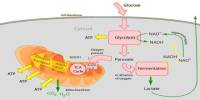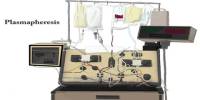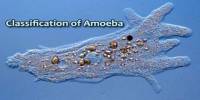Lymph Node
Definition
Lymph nodes (or Lymph gland) are small lumps of tissue that contain white blood cells, which fight infection. They filter lymph fluid, which is composed of fluid and waste products from our body tissues. Lymph nodes are major sites of B and T lymphocytes, and other white blood cells. Lymph nodes also help activate our immune system if we have an infection. They also play an important role in cancer diagnosis, treatment and prognosis.
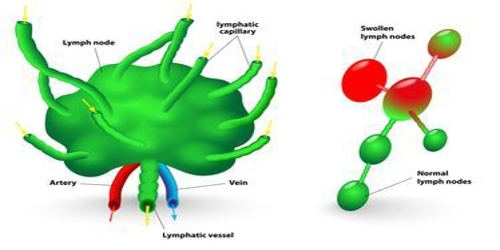
Lymph nodes are traditionally regarded as having three compartments, the cortex, paracortex and medulla. B and T cells home to separate areas within these compartments, interact with antigen presenting cells, and undergo clonal expansion.
In the lymphatic system the lymph node is a secondary lymphoid organ. A lymph node is enclosed in a fibrous capsule and is made up of an outer cortex and an inner medulla. Lymph nodes are located throughout our body, including our neck, armpits, groin, around our gut, and between our lungs. Lymph nodes drain lymph fluid from nearby organs or areas of our body.
Lymph nodes consist of multiple lymphoid lobules surrounded by lymph-filled sinuses and enclosed by a capsule. The complex three dimensional lobules and their surrounding sinuses present a variety of appearances in tissue sections depending on the plane of section.
Structure and Functions of Lymph Node
As part of the lymphatic system, lymph nodes serve as filters for the blood, providing specialized tissues where foreign antigens can be trapped and exposed to cells of the immune system for destruction. They are typically found concentrated near junctions of the major lymphatic vessels, most prominently in the neck, groin, and armpits.
Lymph nodes are kidney or oval shaped and range in size from a few millimeters to about 1–2 cm long. Each lymph node is surrounded by a fibrous capsule, which extends inside the lymph node to form trabeculae. The substance of the lymph node is divided into the outer cortex and the inner medulla. The cortex is continuous around the medulla except where the medulla comes into direct contact with the hilum.

Each lymph node is divided into two general regions, the capsule and the cortex. The capsule is an outer layer of connective tissue. Underlying the capsule is the cortex, a region containing mostly inactivated B and T lymphocytes plus numerous accessory cells such as dendritic cells and macrophages. Cells enter the lymph node through two primary routes. Lymph and its associated cells enter through the afferent lymphatic vessels, which drain into each node through its convex surface. These vessels may drain directly from the lymphatic capillaries, or they may be connected to a previous node.
Lymph enters the convex side of the lymph node through multiple afferent lymphatic vessels, and flows through spaces called sinuses. A lymph sinus which includes the subcapsular sinus, is a channel within the node, lined by endothelial cells along with fibroblastic reticular cells and this allows for the smooth flow of lymph through them.The endothelium of the subcapsular sinus is continuous with that of the afferent lymph vessel and is also with that of the similar sinuses flanking the trabeculae and within the cortex. All of these sinuses drain the filtered lymphatic fluid into the medullary sinuses, from where the lymph flows into the efferent lymph vessels to exit the node at the hilum on the concave side.
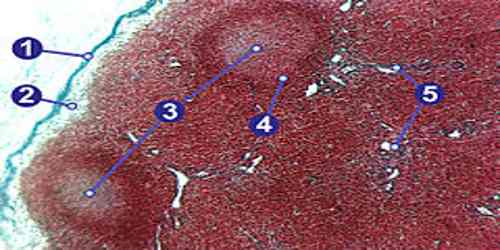
1) Capsule; 2) Subcapsular sinus; 3) Germinal centre; 4) Lymphoid nodule; 5) Trabeculae
The primary function of lymph nodes is the filtering of lymph to identify and fight infection. In order to do this, lymph nodes contain lymphocytes, a type of white blood cell, which includes B cells and T cells. These circulate through the bloodstream and enter and reside in lymph nodes.
The central role played by lymph nodes in filtering microorganisms and other undesired substances from the blood is critical to the functioning of the immune system but also makes lymph nodes vulnerable to cancer. As cancerous cells spread by metastasis, they can become trapped and concentrated in lymph nodes, where they proliferate. Virtually all cancers have the potential of spreading to lymph nodes, a condition that greatly complicates treatment. In most cases surgery alone will not remove the cancer from the nodes, and therefore postoperative radiation or chemotherapy is required.
Reference:

